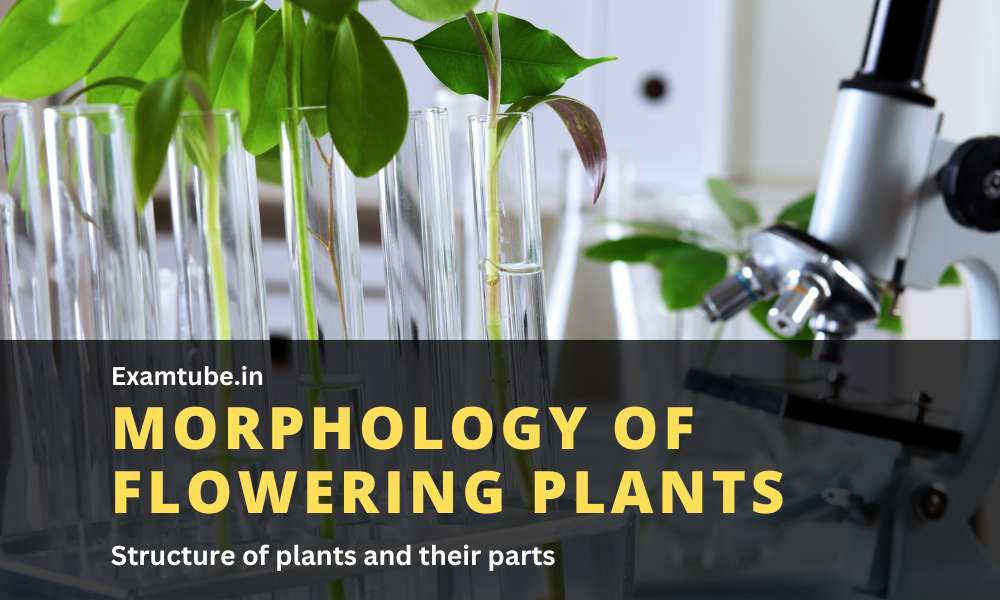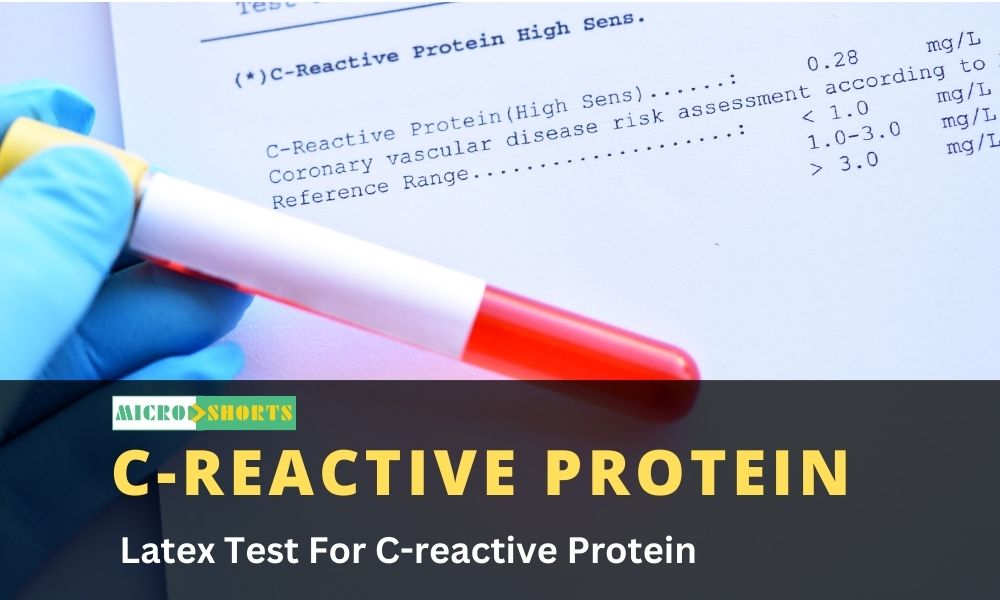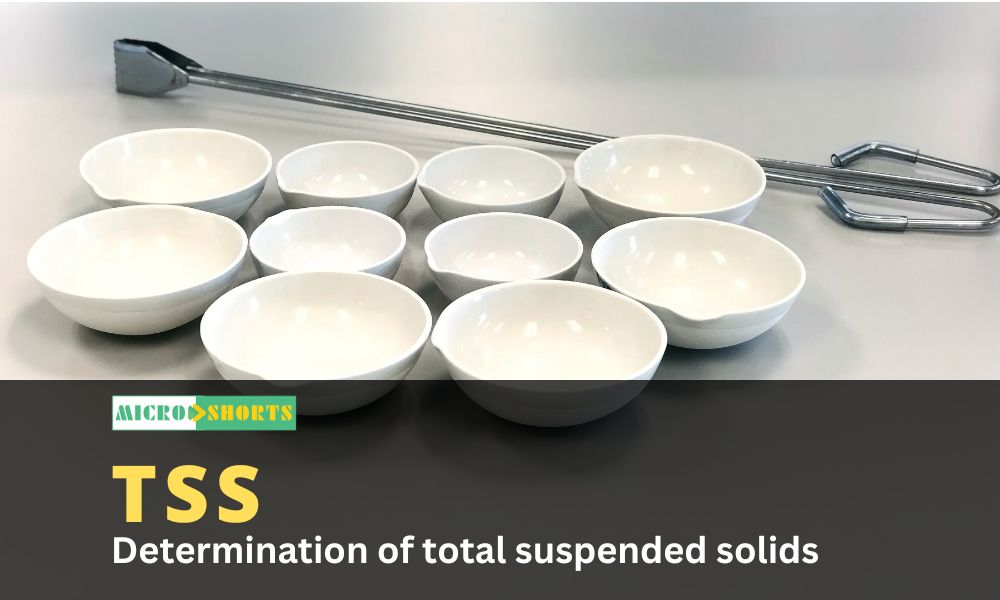What is lignin?
- Lignin
is a group of complex aromatic polymers resulting from the oxidative
combination of 4-hydroxyphenylpropanoids.
- Lignin
is a phenolic polymer that is amorphous, irregular three-dimensional, and
high branches.
- The
process of biosynthesis of lignin results from the radical coupling
reactions of monomers to form cross-linked phenol polymer.
- Lignin
is an essential component of the lignocellulosic biomass where it accounts
for about 15-30% of the total weight.
- It
is the most abundant aromatic biopolymer that consists of about 30% of the
organic carbon on Earth.
- The
chemical species like hydroxycinnamyl alcohols (or monolignols) coniferyl
alcohol and sinapyl alcohol, with typically minor amounts of p-coumaryl
alcohol, are considered the primary building blocks of lignin.
- However,
the chemical composition might vary from species to species.
- The
name lignin is derived from the Latin word ‘lignum’ which was first used
to derive the relationship between lignin and coniferyl alcohol units.
- Lignin
is an important component of the plant cell wall where it provides
structural support, helps in water and nutrients transport, and protects
from chemical and biological attacks.
- The
polysaccharides component of plants is highly hydrophobic, which allows
for the transport of water through cell wall components like lignin.
- It
has many applications including, energy production, production of aromatic
compounds, and production of industrially important compounds.
Structure of lignin

- Lignin
is composed of phenylpropane units linked together by the chemical
linkages of alkyl-alkyl, alkyl-aryl, and aryl-aryl groups.
- The
precursors of lignin synthesis in nature include p-coumaryl alcohol,
coniferyl alcohol, and sinapyl alcohol.
- Different
plant species might contain different ratios of the precursors, as the
lignin in softwood mainly consists of G-unit, whereas that in hardwood and
herbaceous plants consists of G-S units and G-S-H units respectively.
- Natural
lignin is not a simple connection of the monomers, but it is formed by the
irregular coupling or addition of the precursors.
- There
might be significant differences in lignin content in different tissues or
different plant species.
- Ecological
factors, like plant growth, nutrition, climate, and illumination, also
affect the chemical structure of lignin.
- The
chemical structure of lignin is one of the most challenging problems left
in the field of natural polymers.
- Lignin
molecules and their degradation products have many asymmetric centers, but
there is no optical activity, so it is not constructed as cellulose or
protein by a single key-type linkage.
- Many
carbon-carbon bonds might exist between the structural units, and the
molecular structure of lignin cannot be determined by the general
decomposition method.
- Therefore,
lignin is a class of complex molecular structure of polymers that cannot
be described by a structural formula, and the properties of lignin are
defined only on the basis of the elements, functional groups, and their
combination in each unit.
- Natural
lignin consists of three important elements: carbon, hydrogen, and oxygen,
of which the carbon content is much higher than in homogenous
carbohydrates.
- Besides,
important structural characteristics of lignin include the functional
groups, including alcohol hydroxyl group, carbonyl group, carboxyl group,
phenolic hydroxyl group, methoxyl, and sulfonic acid.
- Lignin
is a macromolecule that is linked by benzene propane units to form a
three-dimensional lignin structure via various chemical bonds.
- Nature
and relative proportions of the bonds between benzene propane units are
the main determinants of the chemical structure of lignin.
Microorganisms involved in lignin degradation
- The
biological degradation of lignin is one of the most important steps in the
biospheric carbon and oxygen cycle.
- Much
of the lignin biosynthesized by plants is mineralized and returned to the
atmosphere as CO2, yet the microbiology of lignin degradation
is not well understood.
- The
range of microorganisms now known to degrade lignin includes a wide
variety of both fungi and bacteria.
- Besides,
microorganisms like cyanobacteria and actinomycetes are also known for the
degradation of lignin; however, the level of degradation varies with
microorganisms.
- The
degradation and transformation of lignocellulosic wastes are attributed to
the metabolism of indigenous microorganisms.
- Different
microbial population dominates at various stages and has distinct roles in
the degradation of organic matter.
Lignin-degrading bacteria
- Bacterial
degradation of wood generally occurs slowly, and on wood surfaces with
high moisture content.
- Because
of the lack of penetrating ability, bacteria usually invade wood cells
simultaneously with fungi.
- The
occurrence of lignin-degrading enzymes has been observed in Mycobacterium
tuberculosum, M. avium, Pseudomonas syringae, P. aeruginosa, P. putida,
Bordetella pertussis, Xanthomonas campestris, Escherichia coli,
Caulobacter crescentus Rhodobacter capsulatus, Yersinia pestis,
Campylobacter jejuni, and Aquifex aeolicus.
- Bacteria
like Paenibacillus, Aneurinibacillus aneurinilyticus,
and Bacillus sp. are found to degrade the kraft lignin.
- Rumen
bacteria like Fibrobacter succinogenes, Ruminococcus albus,
and Flaavefaciens are major degraders of plant fiber cell
walls and have an emerging role for bacteria in lignin degradation and
bio-product formation.
Lignin-degrading Actinomycetes
- Traditionally,
it has been suggested that actinomycetes play a role in lignocellulose
breakdown, but details of the scale and methods used for such breakdown
are less known.
- Streptomyces and
other actinomycetes have been identified as lignin-degrading species and
can be isolated from a wide variety of sources, including a range of
soils, high-temperature environments, and termite guts.
- Lignin-degrading
enzymes have been observed in five different species of Streptomyces;
Streptomyces antibioticus, S. griseus, S. coelicolor, S. cyaneus, and S.
lavendulae.
- Peroxidase
and polyphenol oxidase activity has also been observed in the
thermophilic Streptomyces isolates and mesophilic Streptomyces.
Lignin-degrading Fungi
- Among
different wood-decaying fungi, only the white rots have the potential to
degrade all three major components of wood entirely.
- These
fungi mainly belong to the Ascomycetes, Deuteromycetes, or Basidiomycetes
group.
- Typical
examples of white-rot fungi are Ganoderma applanatum and Heterobasidion
annosum that preferentially remove lignin without a substantial
loss of cellulose and cause white-pocket or white-mottled type of rot.
- Other
Ascomycetes like Rhizoctonia solani, Aspergillus nidulans,
Podospora anserina, Neurospora crassa, Gaeumannomyces graminis var.
tritici and Trichoderma reesei have
also been described to produce laccase and other lignocellulolytic
enzymes.
- Overlapping
habits of lignin degradation have been found in the three main ecological
groups as wood-decaying, mycorrhiza-forming, and litter-decomposing fungi.
- Wood-decay
fungi such as Hypholoma sp. (Nematoloma sp.),
Pleurotus sp., and Armillaria are also
capable of colonizing soil in contact with wood debris and causing lignin
degradation.
- Litter-decomposing
fungi (e.g., Stropharia rugosoannulata) are able to grow on
the straw that is usually favored only by wood-decay fungi.
- Agaricus
bisporus is also a litter-degrading fungus which secretes
laccases and manganese peroxidases, and its ability to break down lignin
and cellulose enables it to function as a typical white-rot fungus.
Enzymes involved in the degradation of lignin
- Lignin
does not contain hydrolyzable linkages, which means that the enzymes must
be oxidative in nature to degrade it.
- Lignin
is a stereo-irregular compound, which indicates that the enzymes attack
the substrate in a more nonspecific way compared to other natural
polymers.
- Primarily,
three different enzymes are involved in lignin degradation; manganese
peroxidase (MnP), lignin peroxidase (LiP), and laccases. However, many
other enzymes are participating in lignin degradation.
Lignin peroxidases (LiP)
- Lignin
peroxidase is an extracellular heme-containing peroxidase that is
dependent on H2O2 and degrades a variety of
lignin-related compounds.
- These
enzymes have an unusually high redox potential and low optimum pH,
typically showing little specificity toward substrates.
- Lignin
peroxidase is well known as part of the ligninolytic system both of
aphyllophoralic and agaricalic fungi.
- These
peroxidases preferably oxidize methoxylated aromatic ring without a free
phenolic group.
- Methoxylated
benzenes and benzyl alcohols are the simplest aromatic substrates for
lignin peroxidase.
- The
role of lignin peroxidase in ligninolysis could be the further
transformation of lignin fragments which are initially released by
manganese peroxidase.
- LiP
is used commercially to mineralize a variety of recalcitrant aromatic
compounds, like three- and four-ring polyaromatic hydrocarbons,
polychlorinated biphenyls, and natural dyes.
Manganese peroxidases (MnP)
- Manganese
peroxidase is an extracellular heme-containing peroxidase with a
requirement for Mn2+ as its reducing substrate that has
lignin-reducing properties.
- Manganese
peroxidase is one of the most common lignin-degrading peroxidases produced
by the majority of wood-decaying fungi and many litter-decomposing fungi.
- Structurally,
these enzymes are glycosylated proteins with an iron protoporphyrin IX
(heme) prosthetic group.
- The
enzyme oxidizes Mn2+ to Mn3+, which in turn
oxidizes phenolic structures to phenoxyl radicals. Mn3+ formed
is highly reactive and complexes with chelating organic acids such as
oxalate or malate.
- As
the redox potential of the MnP-Mn complex is lower than that of lignin
peroxidase, it preferably oxidizes phenolic substrates.
- The
phenoxyl radicals formed might further react, resulting in the eventual
release of CO2.
- The
phenoxyl radicals formed subsequently cleave Cα -Cα or alkyl-phenyl bonds
causing depolymerization to smaller intermediates including quinones and
hydroxyl quinines.
Laccases
- Laccases
are a group of lignin-degrading enzymes consisting of N-glycosylated
extracellular blue oxidases and four copper atoms in the active site that
are distributed among different binding sites.
- Laccases
catalyze the oxidation of several aromatic hydrogen donors with subsequent
reduction of oxygen to water.
- Moreover,
laccases oxidize not only the phenolic and methoxyphenolic acids but also
decarboxylate them and attack their methoxy side chains or groups.
- Several
fungal laccases have been considered for the oxidation of compounds like
1-(3,4-dimethoxyphenyl)-2-(2-methoxyphenoxy) propan-1,3-diol (I), and
phenolic lignin model compounds like phenol red in the presence of the
redox mediators.
- Laccases
have been reported to oxidize many recalcitrant substances, such as
chlorophenols polycyclic aromatic hydrocarbons (PAHs), lignin-related
structures, and organophosphorus compounds.
Factors affecting lignin degradation
The process of lignin degradation can be affected by a
number of factors like;
Moisture content
- Degradation
of lignin occurs most rapidly when the source is completely saturated, and
free water is present.
- Increasing
the amount of water has little effect on the degradation process until
aeration becomes impaired.
Added Nitrogen
- The
growth and biosynthesis of lignin-degrading enzymes require a particular
concentration of nitrogen.
- It
is observed that the rate of lignin degradation increases with the
increase in nitrogen concentration but only to a certain degree.
- Besides,
the addition of a very high concentration of nitrogen tends to have a
detritus effect on the overall carbohydrate degradation, along with lignin
degradation.
Added glucose
- The
process of lignin degradation slows down with the addition of glucose as
an excess of readily available energy source like glucose causes decreased
consumption of lignin.
- When
all the available energy sources are omitted, the microbial action on the
lignin-rich compounds increases.
Aeration
- The
rate of lignin and carbohydrate metabolism increases with the increase in
oxygen content in the environment.
- This
is due to the fact that most of the microorganisms involved in lignin
degradation are aerobic microorganisms that thrive in a high oxygen
atmosphere.
- Besides,
efficient lignin degradation is also seen under a CO2 concentration
of 30% and an O2 concentration of 10%.
- However,
a pure O2 atmosphere might be toxic if any other form of
energy like glucose or cellulose is present as it suppresses lignin
degradation.
Process of lignin degradation
The overall process of lignin degradation can be explained
in two simple steps;
Depolymerization
- The
first step of lignin degradation is the depolymerization of aryl and
biaryl compounds such as β-aryl ethers.
- This
step is a non-specific step that occurs extracellularly by different
bacterial and fungal enzymes.
- Depolymerization
of lignin occurs as a result of cleavage of β-O-4 ether bond that
represents about 50% or more of the total linkages in lignin.
- This
step decreases the length of the lignin polymer so as to obtain dimeric or
oligomeric units, which can then further be degraded into smaller
molecules.
- Depolymerization
in microorganisms is catalyzed by different lignin-degrading enzymes found
in many microorganisms like peroxidases and phenol oxidases.
- These
enzymes attack the lignin randomly, then convert the phenolic group to
free-radicals, and these radicals lead to lignin depolymerization.
Solubilization and Mineralization
- The
smaller molecules of lignin formed after depolymerization are now taken by
different microorganisms that catalyze a series of conversion by various
in vivo enzymes.
- Most
of the linkages within the lignin molecules have their specific metabolic
pathways to cleave these specific linkages.
- The
mineralization and solubilization of oligomers and monomers result in the
formation of CO2 and other essential molecules that can be
utilized by the organisms.

Mechanisms of microbial degradation of lignin
- The
mechanisms of microbial degradation of lignin might be different with
different types of enzymes involved.
- Three
particularly important enzymes; laccases and lignin peroxidases are
involved in the in vitro depolymerization of larger lignin molecules.
- Other
mechanisms are involved in the solubilization of lignin into even smaller
usable molecules within the microorganisms.
- The
overall process of lignin degradation can be explained as in vitro
degradation and in vivo degradation.
In vitro degradation
Biodegradation of lignin with laccase
- The
biodegradation of lignin by the laccase enzyme system is an oxidative
process consisting of enzyme-catalyzed and mediator-facilitated radical
reactions.
- This
process degrades both phenolic and non-phenolic aromatic structures in
lignin. However, the initial attack is on the phenolic moiety, followed by
the degradation of non-phenolic benzylic structures.
- As
a result of the initial attack, phenol residues are released with oxidized
side chains. This enables the enzyme to penetrate the bulk lignin polymer
and act as natural mediators to oxidize non-phenolic regions.
- The
mechanism of lignin degradation proceeds by a Cα-Cβ cleavage of
non-phenolic sites in lignin with solubilization of lignin fragments by
the formation of hydrophilic lignin-mediator complexes.
- This
occurs by one of the three oxidation mechanisms; electron transfer,
radical hydrogen atom transfer, and ionic mechanism.
Biodegradation of lignin by lignin peroxidase
- The
catalytic cycle of lignin peroxidase-like manganese peroxidase is
initiated by the binding of H2O2 or an organic
peroxide to a native ferric enzyme and formation of an iron-peroxide
complex.
- The
complex thus formed is cleaved, resulting in the oxidation of Mn2+ into
Mn3+.
- Chelates
of Mn3+ with carboxylic acids (e.g. oxalate, malonate,
malate) cause one-electron oxidations of various substrates.
- Phenolic
and amino-aromatic compounds are oxidized by the removal of hydrogens to
form phenoxyl and amino radicals, respectively.
- These
radicals are the sources of peroxides that are generated via
auto-catalytical reactions and can be used by MnP in the absence of
external H2O2.
- The
underlying mechanism of decomposition of lignin is based on initial
one-electron oxidation of the substrate by enzyme-generated Mn3+,
which produces a phenoxyl radical intermediate.
- This
radical is further oxidized by Mn3+ to form a
carbon-centered cation. The subsequent loss of proton yields the ketone
dimer.
- An
attack by water on the cation, followed by the cleavage of the
arylglycerol-aryl structure, produces the other depicted products.
In vivo degradation
β-O-4 ether degradation
- The
cleavage of the β-O-4 ether bond is considered an important step for
lignin depolymerization as it represents about 50% of all linkage sin
lignin.
- The
pathway and mechanism of β-O-4 degradation start with LigD, a
Cα-dehydrogenase.
- LigD
oxidizes the hydroxyl group at Cα position, then the β-etherase, LigE or
LigF, cleave the β-O-4 ether bond and generate vanillin and αglutathionyl-β-hydroxypropiovanillone
(GS-HPV) as intermediate.
- Finally,
the GS-HPV is oxidized by LigG, glutathione-S-transferase.
- The
glutathione is cleaved, and the remaining β−hydroxypropiovanillone can be
further oxidized to vanillin.
Bi-phenyl degradation pathway
- The
biphenyl linkage represents 10% of the total linkages in softwood lignin.
- When
the 5, 5’-dehydrodivanillate (DDVA) enters the organism, LigX, a DDVA
O-demethylase, demethylates one of the methoxy group and convert it to the
hydroxyl group.
- The
product of LigX is the substrate for oxidative meta-cleavage by LigZ,
OH-DDVA dioxygenase.
- The
product from LigZ is further hydrolyzed by LigY, a hydrolase for the
meta-cleavage compound of OH-DDVA.
- Finally,
the end products of the cleavage of LigY are
4-carboxy-2-hydroxypentadienoic acid and 5-carboxyvanillic acid (5CVA),
and the 5CVA is further metabolized into one of the central products,
vanillate.
Example of lignin degradation
Lignin degradation by Pseudomonas
- Pseudomonas metabolize
various low molecular weight lipid found in lignocellulose biomass.
- It
produces a benzaldehyde lyase which cleaves the acyloin linkage of the
1,2-diarylethene compounds and benzoin.
- The
enzyme is highly specific, cleaving only anison (4,4’-dimethoxybenzoin)
and benzoin.
- Some species of Pseudomonas might even produce protocatechuate-4,5-dioxygenase which catalyzed the ring-fission of protocatechuate and 3-methyl-gallic acid.









Comments